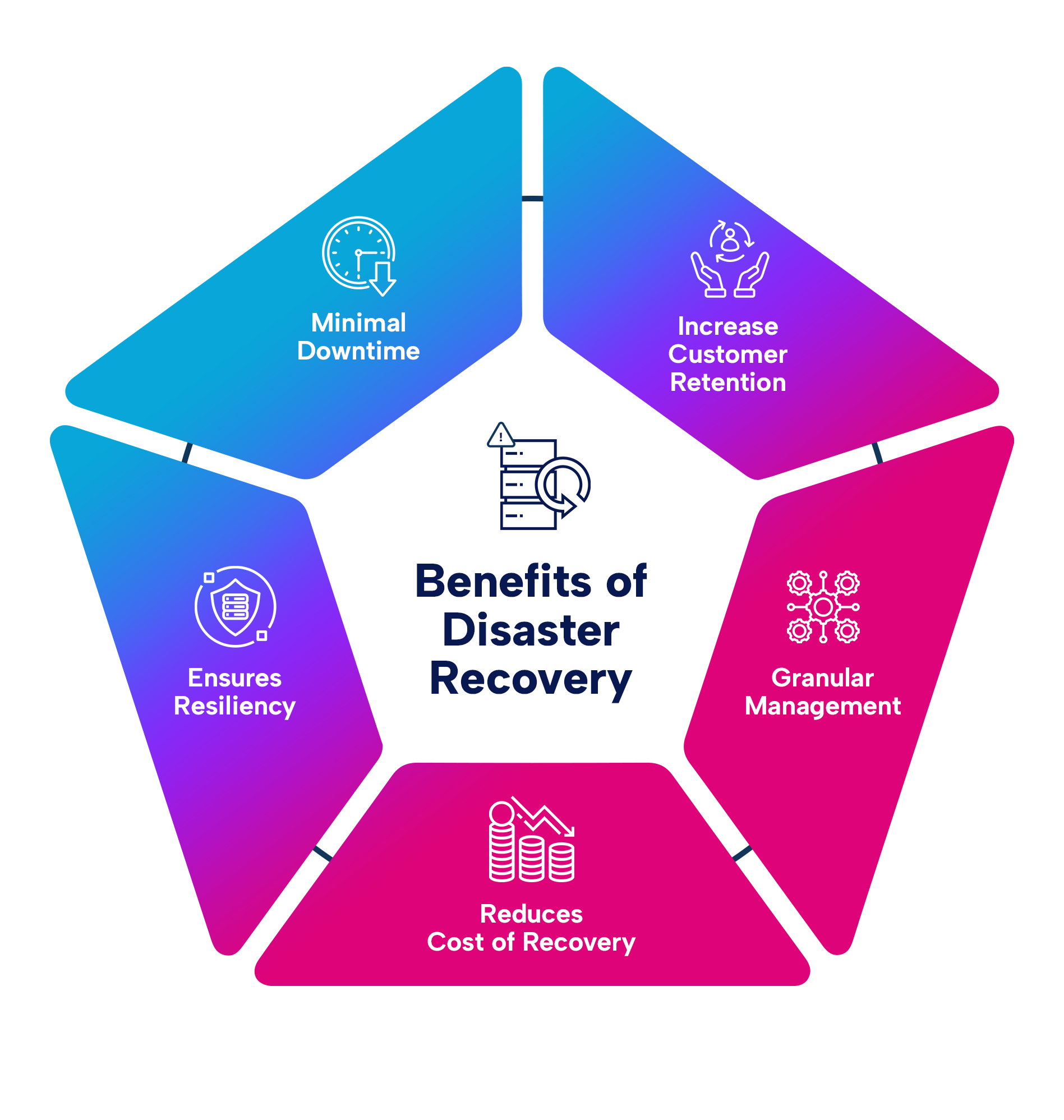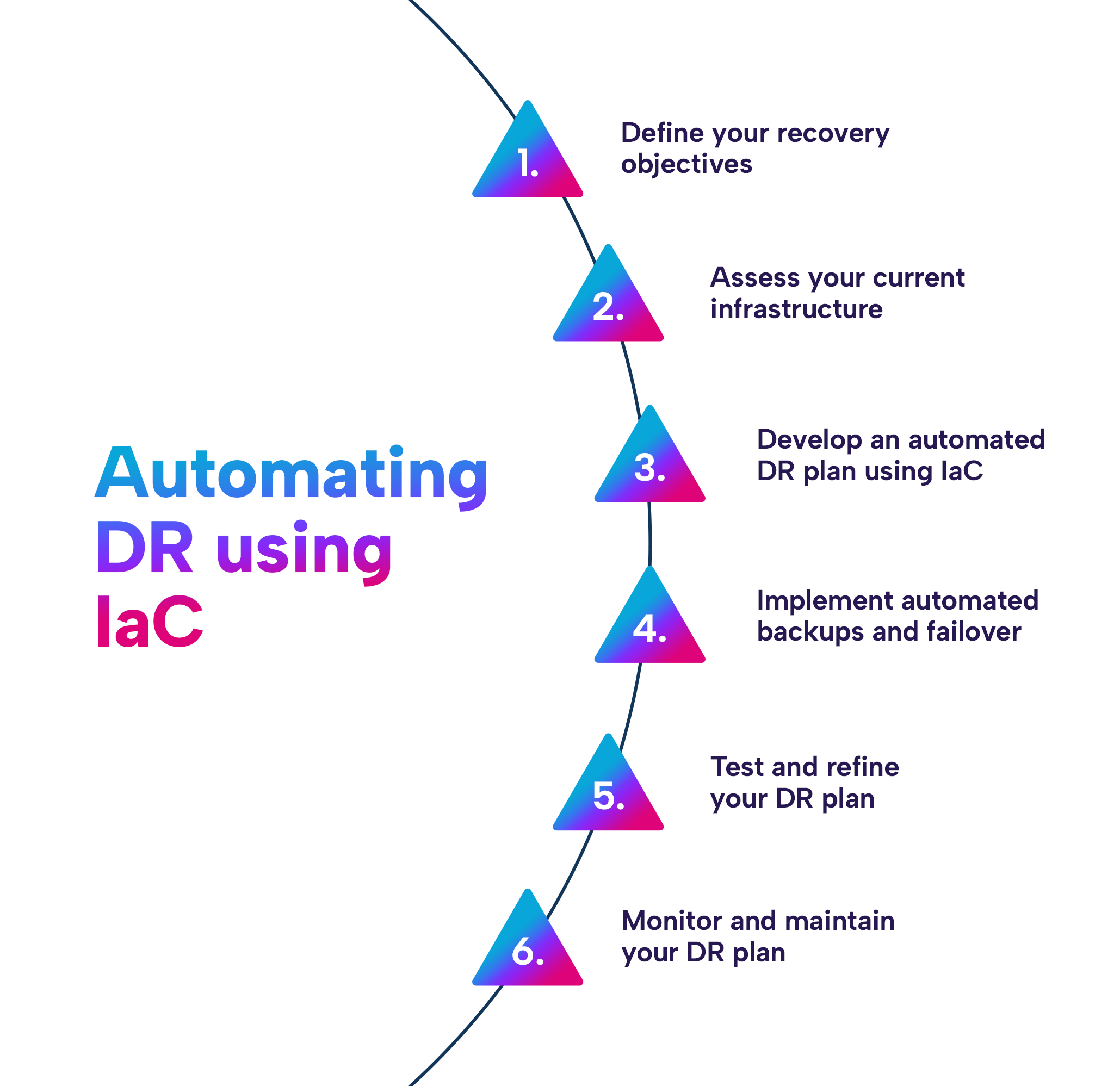Disaster Recovery Using Infrastructure as a Code
By Sakshi Zalavadia, Devangi Goswami, Shrey Shah / Dec 29,2022
Why is Disaster Recovery needed?
Consider a scenario, a major disaster occurs at a large financial services organization, and a significant cyber-attack renders all their IT systems inoperable. This attack results in data loss, system failures, and network outages, all of which have an impact on the company's ability to conduct business and provide services to its customers. This is where a Disaster Recovery (DR) plan comes in handy.
What is Disaster Recovery?
A disaster is an unforeseen issue that causes a network outage, congestion, and other issues in an IT system. Disaster recovery is the process of bringing all the IT infrastructure, assets, and vital systems to their normal functioning state after a natural or man-made disaster. The longer it takes to restore critical systems and assets, the greater the financial impact will be. A DR strategy offers important advantages and enables organizations to react quickly to disruptive incidents.

Traditional Disaster Recovery methods:
Some businesses are compelled to adopt traditional disaster recovery to meet certain compliance and security requirements. Common traditional DR methods include:
- Manual procedures: This procedure includes manual data input, manual reconciliation, and other manual procedures that can be used to resume regular business activities.
- Backup and Restore: It involves systematically backing up important data and systems and then restoring them in case of a disaster. It makes a copy of the data and stores it securely in the cloud or on-premises.
Some other traditional DR methods are virtualization, hot site, cold site, etc.
Limitations of traditional Disaster Recovery methods:
Traditional DR can be complex to implement and maintain, requiring a significant investment in hardware and software, thus, increasing the cost. It can also result in data loss, especially if there is a gap between backups or if the backups themselves are lost or damaged during a disaster. It can even take longer to recover from a disaster. This can lead to significant downtime and can impact an organization's ability to continue operating. Given the limitations of traditional DR methods, many organizations are shifting their focus to more flexible, faster, and cost-effective disaster recovery methods.
Automated Disaster Recovery:
Automated disaster recovery is one such modern disaster recovery method that provides a quick and flexible solution. Automated DR solutions automate key disaster recovery processes such as data replication, failover, and recovery, reducing the time & effort required to recover from a disaster. Automated DR solutions can also provide organizations with real-time monitoring & reporting, allowing them to detect and respond to potential disasters quickly. This method of automated disaster recovery can be achieved by Infrastructure as a Code (IaC).
Introducing Infrastructure as a Code (IaC):
IaC is a technique for managing infrastructure, including servers, networks, and storage, by using code and automated procedures. Using this strategy, businesses may manage their infrastructure in a more automated, effective, and scalable way. IaC provides benefits such as speed, version control, efficiency, collaboration, and more.
Popular tools for IaC are Terraform, Ansible, Chef and Puppet.

Roadmap of Disaster Recovery using IaC:
- Define your recovery objectives - Defining your recovery goals is the first step towards automating disaster recovery. This includes setting your recovery time objectives (RTOs) and recovery point objectives (RPOs), identifying your vital systems and data, and documenting your DR processes & procedures.
- Assess your current infrastructure - The next step is to evaluate your current infrastructure and identify any gaps or vulnerabilities that must be addressed. Identifying critical dependencies and ensuring that all systems and data are adequately protected and backed up are all part of this.
- Develop an Automated DR plan using IaC - Once you have identified your recovery objectives and assessed your infrastructure, the next step is to create an IaC template that describes the desired state of your infrastructure, including your servers, storage, networking, and other resources.
- Implement automated backups and failover - The automated backup involves using IaC tools to create snapshots or backups of your infrastructure or integrating with backup and recovery tools that can automate the backup process. Automated failover involves setting up a secondary environment that can take over in the event of a disaster and using IaC tools to automate the failover process.
- Test and refine your DR plan - The next step is to test and refine your IaC template and automated backup & failover processes. This includes performing regular DR tests to ensure that your processes are functioning as expected, as well as refining your plan as needed to address any issues or gaps discovered during testing.
- Monitor and maintain your DR plan - Finally, to keep your DR strategy current and effective, it's crucial to regularly review and maintain it. This involves regularly analyzing and improving your DR processes & procedures in addition to changing your IaC template as your infrastructure changes. Using version control for the DR plan ensures that all changes made to the plan are tracked and documented. It helps to maintain the integrity of the plan and ensures that all stakeholders are aware of any modifications made to the plan.
Conclusion:
Looking at the several benefits of IaC such as decreased time & effort required to recover from disruptive events helps to quickly provision new resources automatically in the event of a failure. IaC can help organizations to ensure consistency and reliability in their recovery processes. IaC will certainly continue to gain prominence as a disaster recovery method in the future. The usage of IaC for disaster recovery is expanding as businesses migrate their IT infrastructure more frequently to the cloud and use DevOps techniques. Future developments in IaC-based DR tools and technologies should make it even simpler for businesses to build dependable and resilient IT infrastructure.




